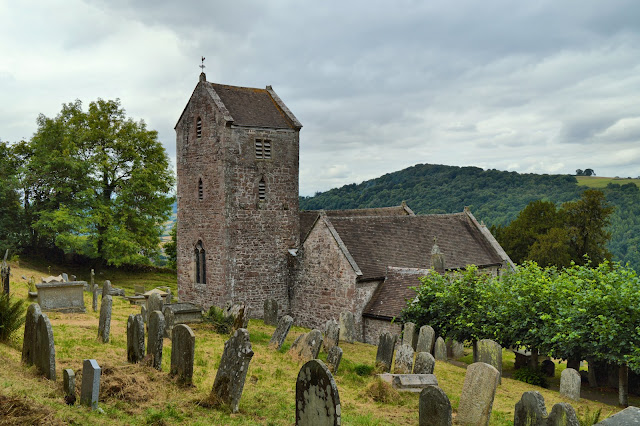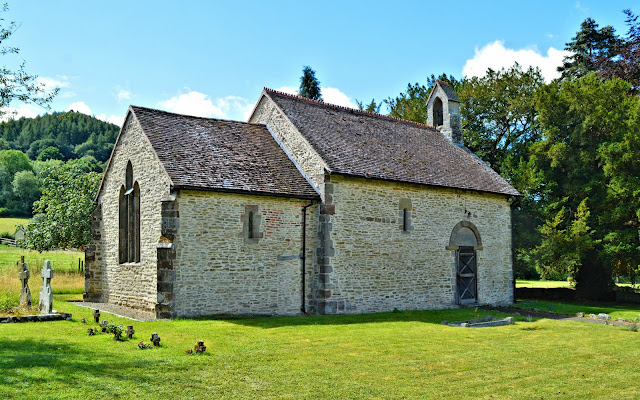How it all began...
Historic buildings have been a huge part of my life since childhood. My late mother told a story about pushing me at a very tender age past St Michael’s churchyard wall on Watling Street in Sittingbourne, Kent. I pointed to the wall and said ‘Roman’, which was hopelessly inaccurate for a wall erected in the mid-nineteenth century, although it contains much reused material, in all probability some of it Roman.
 |
| St Michael's, Sittingbourne. Beside Roman Watling Street, later a pilgrim route to Canterbury. Image courtesy of John Salmon |
For my 12th birthday the star present was the Kent volume of Arthur Mee’s King’s England, followed soon after by a handsome racing bike. The bike is long gone, but the battered Mee volume survives, bearing the scars of having travelled from church to church along the highways and dusty byways of North Kent. While the nation was excitedly watching Princess Margaret on television as she married Anthony Armstrong-Jones in May 1960, I was finding excitement at the deliciously unrestored All Saints, Graveney on the marshes, with its wealth of ancient timber, its screens and box pews and the fabulous 14th century brasses of Justice Martyn and his wife. Over the next few years every church within 30 miles of my Sittingbourne home had been ticked off, plus a brace of cathedrals, a number of ruined monasteries and the odd castle or two.
 |
| No Victorian restorer found work here – All Saints, Graveney, Kent. Photograph copyright Paul Anthony Moore |
Several decades on and after a career of ultimate variety, retirement sees me settled with my wife in a hamlet close to Weobley in Herefordshire, a blissful county of rolling hills in the Marches with more than its fair share of interesting churches, a few of national importance. Many, however, are virtually unknown outside the county. The term Marches is presently accepted to mean the counties that lie on either side of the current Welsh border. It is as area of largely rural tranquility that belies its turbulent past. Although the churches explored here are in the main Herefordian, there will be frequent forays into other counties, both English and Welsh.
In this site I share my thoughts on a varied selection, ranging from the few grand town churches to the many more humble buildings, some of which are in remote and romantic locations. The grandest architecture is in short supply and the evidence of medieval prosperity to be seen in nearby Gloucestershire, Wiltshire and Somerset is mostly absent from the rural churches of the Marches. However, there was an extraordinary period in the 12th century when the architecture and sculpture produced in Herefordshire was at least the equal of anything elsewhere. Happily, much of it survives throughout the region. It is all the more remarkable that the work of the Herefordshire School of Romanesque Sculpture was produced against a background of almost continuous civil war, firstly the great Anarchy of 1135-54 caused by the lengthy war between King Stephen and his cousin Matilda, followed soon after by the struggle between Henry II and his sons in 1173 and 1174.
 |
| Sculpture at St Peter and St Paul, Rock in Worcestershire – products of the famed Herefordshire School of Romanesque Sculpture |
Pre-Conquest evidence is in short supply throughout the region but even the humblest churches often clearly show their Norman origins. The thirteenth century saw the transition from the Romanesque to Early English Gothic, best exemplified here at Dore Abbey. The Lady Chapel and North transept at Hereford Cathedral are examples of Early English on the grandest scale. The fourteenth century saw intensive activity resulting in some outstanding churches and exquisite stained glass. Little was built new in the 15th and 16th centuries, Ludlow and Tong being exceptions. Several fine screens of that time survive. The seventeenth century is best represented by Monnington on Wye and the Laudian restoration of Dore Abbey after 1633 and there is nowhere quite like the Strawberry Hill Gothick interior of 1756 at Shobdon.
 |
| St John, Shobdon. The 18th century Gothick windows of the exterior give a hint at what lies within. |
Nineteenth century ‘restorations’ are widespread and many are acceptable to my twenty first century eyes. The earliest years of the twentieth century saw the completion of W.R. Lethaby’s masterpiece All Saints, Brockhampton, ‘one of the most convincing and impressive churches of its date in any country’ in Nikolaus Pevsner’s opinion.
 |
| All Saints, Brockhampton-by-Ross, Herefordshire. W.R.Lethaby’s arts and crafts masterpiece. |
The present century has seen the reordering of some churches and the installation of facilities that enable the buildings to be used for secular and community purposes. There are examples in the area of both how it should be done and how, perhaps it should not. Whatever one’s view, these changes are just as much a part of a building’s history as any addition, alteration or ‘restoration’ of earlier times.
I would hope to be able to shine a small light on some of the lesser known churches in the Marches while not overlooking the undoubted stars of the show. Our much-wounded cathedral in Hereford will not feature, purely on the grounds of space rather than lack of merit.
Unless otherwise credited, all photographs are my own.
Philip Pankhurst
January 2024



Comments
Post a Comment